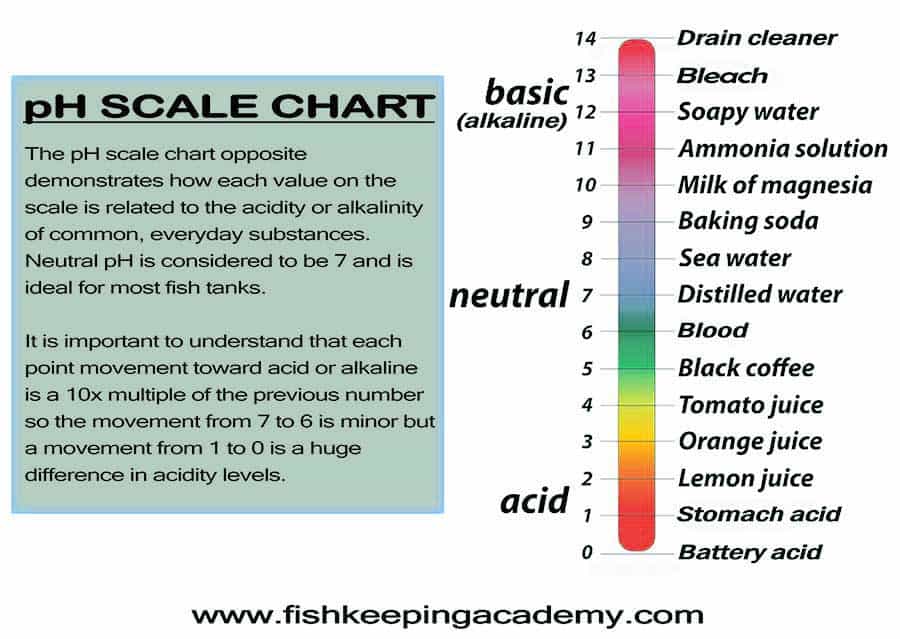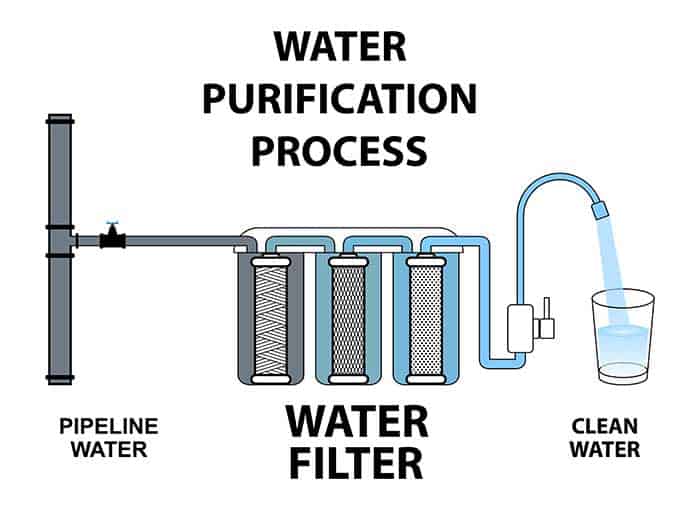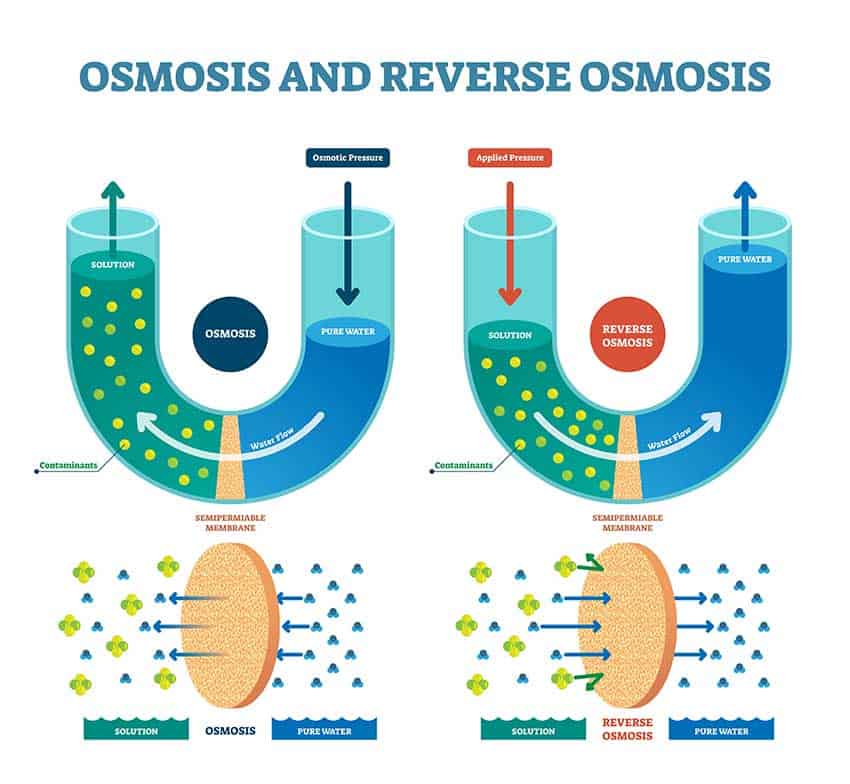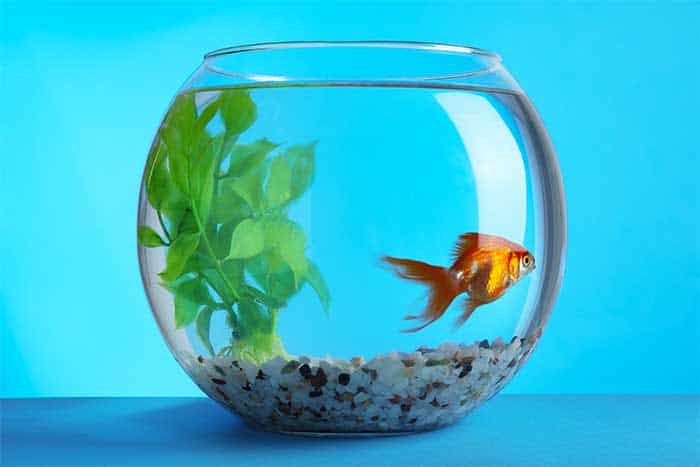Distilled Water For Fish Tank (The Good and the Bad)
There is so much to think about when it comes to fish tank water, and the question often asked is, what water should you use in a fish tank? You can be excused for thinking that using distilled water for a fish tank would be the safest option because of its purity, but is distilled water best for fish?
Distilled water shouldn’t be used in a fish tank by itself or for large water changes because it lacks the essential minerals that fish and other living organisms require for optimum health. The pH of distilled water can also be unstable because the lack of minerals reduces its buffering capacity.

Water chemistry can seem complicated, but you do not need to understand it thoroughly to keep your fish in good health.
This article will explain everything you need to know when choosing a water source for your aquarium, especially if you are considering using distilled water for your fish tank.
What Is Distilled Water?
Distilled water is any water that goes through the purifying process of distillation. Distillation is carried out by boiling water and collecting the steam as it evaporates. As the steam rises and accumulates, it condenses back to water leaving behind impurities such as dissolved minerals, while the extreme heat kills bacteria.

Distilled water has many popular uses because of its purity, especially in medical settings. You would assume that this purity would make distilled water safe for fish, but there are some drawbacks to using distilled water for fish tanks, which is covered shortly.
Is Distilled Water Acid Or Alkaline?
Because distilled water is very pure, it is also very soft with a neutral pH of 7, making it neither acid nor alkaline. Water hardness is determined by the number of minerals and heavy metals present. Some of these minerals also act as buffering agents to keep the water’s pH stable from the effects of acids.
If you are inexperienced, you may not fully understand aquarium pH, so I recommend you have a quick read of my article on Fish Tank pH Levels.
Sudden changes to the pH of water can seriously impact the health of your fish, resulting in something called pH shock, which can cause stress and other illness.
The ideal aquarium pH for most fish species should be between 6.5 and 7.5, but this will vary depending on the type of fish you keep. For example, African cichlids prefer a slightly higher pH of around 7.8, while goldfish prefer a lower pH of about 6.0.

Many fish can adjust to a pH outside their preferred range, but all fish need a stable pH free from fluctuations. Certain minerals such as magnesium, carbonates, and phosphates can act as buffers, helping neutralize the effects of acids, resulting in a more stable pH. Because distilled water lacks these minerals, the pH can change rapidly from its neutral pH of 7 to 4 or 5 within a few hours.
Is Distilled Water Safe For Fish?
Distilled water is unsafe for fish when used by itself, and there are arguments for and against using it in a fish tank.
Advantages of using distilled water in a fish tank:
- Distilled water is pure and free from bacteria, viruses, and harmful minerals or heavy metals such as copper, lead, and mercury.
- Distilled water doesn’t need treatment to remove chlorine and chloramines, which can harm fish and kill the beneficial bacteria colonies already in your tank.
- Distilled water is pH neutral, which is suitable for most fish species and helps lower alkalinity in your fish tank.
- Bottled, distilled water is relatively inexpensive.
Disadvantages of using distilled water in a fish tank:
- Distilled water lacks the minerals and nutrients required for many biological processes in fish and live plants.
- Distilled water lacks the minerals which act as a buffer against acidity, causing it to be unstable and prone to sudden pH swings.
- Adding fish to pure distilled water will cause your fish to lose the necessary minerals. Water will absorb minerals from its surroundings, including from your fish and plants, leaving them mineral deficient.
Untreated, distilled water can cause harm to your fish when used by itself because it will take the minerals away from your fish, leaving them mineral deficient. Severe mineral deficiency can kill your fish.
Some fish are more at risk than others, such as betta fish which you can read more about in my article: What Water To Use For Betta Fish.
Is Distilled Water Ok For Tropical Fish?
Freshwater tropical fish will be more tolerant of distilled water than saltwater fish species because many are used to living in soft water with low mineral content. You should still not use pure distilled water for tropical fish to live in because it will pull nutrients away from your fish. You should mix distilled water with tap water or other mineral-rich water.
Distilled water is best to use in small amounts, like small water changes and topping up your tank to offset evaporation. There are a few benefits of using distilled water in your fish tank in small amounts, such as:
- The neutral pH of your distilled water will not upset the current pH value of your water.
- The distilled water will mix with the minerals already in your tank.
- Distilled water will not introduce microscopic pathogens or unwanted impurities to your aquarium.
Using distilled water in small amounts will absorb minerals from the surrounding water and become safer for fish.
Can You Use Distilled Water In A Saltwater Fish Tank?
You should not use untreated distilled water in a saltwater fish tank. Saltwater fish require precise and stable water parameters to stay healthy, and distilled water lacks the minerals and nutrients needed to maintain these levels. You will need to add the correct mineral content as you would with any other type of water.
Using distilled water in small amounts to top up your tank can be beneficial as evaporation only removes water, not minerals. As minerals are behind, they become concentrated, so adding distilled water will dilute the delicate salt and mineral concentrations back to a safe level.
Difference Between Tap Water And Distilled Water For Fish Tanks
The main difference between tap water and distilled water for fish tanks is the type of treatment they require. Tap water can contain many harmful metals and chemicals, such as chlorine, which you must remove before it is safe for fish. Distilled water, on the other hand, is free of impurities.
Minerals and metals are referred to as Total Dissolved Solids (TDS), and they play a part in water hardness (GH), carbonate hardness (KH), and pH stability. Certain minerals and metals such as mercury, phosphates, copper, and lead are also very toxic to fish, whereas magnesium, iron, calcium, and zinc are beneficial in trace amounts.
Water takes on the characteristics of its geographical location, so areas high in certain minerals and heavy metals will cause water to be harder than areas that lack these compounds. Because of these fluctuations, it is always wise to establish what type of tap water you have by measuring its hardness and pH with a test kit.
You should always treat tap water with dechlorinators or all-in-one water conditioners to remove harmful chemicals and minerals before adding them to your tank. Even small doses of chlorine can kill your colonies of beneficial bacteria, which help stop ammonia spikes in your fish tank and keep nitrite levels low. High levels of minerals can also destabilize the delicate pH balance in your aquarium.
Distilled water has gone through a water distillation process which removes all chemicals, minerals, and other impurities, so it will not require the same treatment as tap water.
What I Use
The test kits and water conditioners that I recommend are:
API Freshwater Master Test Kit
Can I Use Distilled Water For My Fish Tank?
From everything covered so far, we can safely say that you can use distilled water in your freshwater fish tank in particular circumstances without harming your fish. Still, you will need to use it sparingly or remineralize it before using it in larger amounts. Using distilled water also gives peace of mind that you are not introducing harmful bacteria and microscopic pathogens to your tank.
Most water types can be used in an aquarium, and they each have their own characteristics that require specific treatments to make them safe. Taking water from a fish’s natural habitat is a perfect example of water that wouldn’t require treatment, but this would not be possible for most tropical fish.
One of the benefits of distilled water is that it retains the same characteristics. Over time, you can develop a specific treatment plan to make the water suitable for your fish tank, which you can repeat to obtain the same results.
When Can You Put Distilled Water In A Fish Tank?
The best time to use distilled water in a fish tank is when you live in an area with very hard water or only have access to contaminated water sources. Adding distilled water is a great way to soften aquarium water quickly by diluting its excessive mineral content.
If you are using untreated distilled water, it will be best to use it for small water changes or to top up your tank because of evaporation. The purity of distilled water will not throw your water parameters off when used in small amounts, and the lack of beneficial nutrients and minerals will already be present in your aquarium.
Using distilled water to top up a fish tank because of evaporation is much more beneficial because evaporation does not take minerals with it. Hard water stains on fish tank glass are often caused by evaporation because the water turns to vapor and leaves behind minerals such as calcium which causes white chalky deposits on the aquarium glass.
Over time, water evaporation can cause high concentrations of minerals in your fish tank. By adding mineral-free distilled water, you only replace the lost water and dilute the minerals back to a safe level.
How To Make Distilled Water Safe For Fish
If you plan to use distilled water in your fish tank regularly, it will need to be remineralized. All living creatures require a certain level of minerals for good health, and without them, you can expect your fish to get ill more often, suffer from stress, exhibit growth problems, dull color, or even have a shorter lifespan.
The good news is that there are many ways to remineralize distilled water, and you can find a method that suits you, your fish, and your budget.
How To Remineralize Distilled Water For Fish Tank
There are several ways to remineralize distilled fish tank water, but I will only cover the most popular methods, which are:
1. Mix distilled water with tap water. If tap water is too hard or mineral-rich, mixing distilled water will help soften it by diluting the minerals. You will need to treat your tap water with a suitable fish tank water conditioner to remove any harmful chemicals before mixing it with your distilled water.
It is easy to judge how much to mix if you have used a water test kit. Carbonate hardness is measured in dKH or Degree Of Hardness, and most freshwater fish prefer water that is between 4-8 dKH.
If your tap water is 10 dKH, mixing equal parts of distilled water and tap water will cut this in half, so for a 20 gallon tank, you would use 10 gallons of tap water with 10 gallons of distilled water to reach 5 dKH. Add more tap water to increase the carbonate hardness.
2. Make a mineral or salt mix and add it to your distilled water. You can make a mineral salt mix with Epsom salt to increase magnesium levels, calcium chloride for added minerals, and baking soda if the pH of the water has dropped below neutral. You will need to experiment until you find the correct mineral balance for your tank.
I recommend experimenting on 5 gallons of distilled water and then measuring the hardness and pH with a robust test kit. Once you find the correct hardness level, you can repeat the process using the same quantities.
3. The easiest method is to use a commercial remineralizer. Remineralizers are designed for this purpose and contain all the necessary minerals and nutrients your fish will need. You simply add the recommended amount to your distilled water, and then it is safe for use in your aquarium.
The remineralizer that I recommend is Seachem Equilibrium which you can find here.
Purified Water For Fish Tank
Another type of water that you can use for your fish tank is purified water. Purified water has been through one less step of purification than distilled water, so it retains the mineral content and can be better for use in a fish tank. Purified water for a fish tank can be more expensive, but there are methods that you can use to purify your own fish tank water.
The main methods used to purify water are:
- Reverse Osmosis
- De-Ionization
- Boiling
- UV Radiation
Each of the methods above will purify water to a different degree.

Spring water or mineral water are examples of water that have been through purifying processes and can be used in a fish tank as they both retain the required minerals. Mineral and spring water can be much more expensive than distilled water, so they are often not viable options to use as fish tank water.
Difference Between Distilled And Purified Water For Aquariums
The mineral content is the main difference between distilled water and purified water for aquariums. Purified water hasn’t been through the condensing process, so it is not as pure as distilled water. Dependent on the purification process, purified water can retain much mineral content while other contaminants are removed.
Most water purification methods remove impurities such as chlorine, fluoride, heavy metals, and bacteria. Distilled water removes all of these impurities as well as the trace minerals that are present in water.
Reverse Osmosis For Aquarium Water
Reverse Osmosis (RO) is a filtration method commonly used to purify aquarium water. The process works by passing water through a semi-permeable membrane, removing impurities such as fluoride, chlorine, and heavy metals.
Reverse osmosis is an effective way of purifying water, but it can be expensive initially as it requires specialist equipment. Over time you will save money by purifying your own tap water.
Reverse osmosis is not a perfect process as it can leave the water with low mineral content, similar to distilled water, so it will require remineralization before use.
The main advantage of using RO water for your aquarium is that it removes most of the harmful contaminants found in water, such as heavy metals, bacteria, and chemicals. You can also use reverse osmosis to soften your tap water by only filtering part of it. This is a good way of retaining enough minerals for healthy fish tank water.

The best reverse osmosis system for freshwater aquariums is a portable RO system, such as the AQUATIC LIFE RO BUNDLE that I would recommend. It’s in the lower price range and still very capable.
Final Word
Although tap water is the easiest, cheapest, and most readily available water source for an aquarium, it is not always the most suitable. Some people live in very hard water areas and keep fish that prefer softer water. In this case, it is best to use distilled water for your fish tank.
Distilled water is the purest form of water but does not contain any minerals that are essential for fish health or a healthy aquarium, so it will need to be remineralized before use.
An alternative to distilled water is purified water which is not quite as pure but dependent on the purification process, it may contain some minerals.
Reverse osmosis water is a form of purified water that has many of the nutrients and minerals filtered out. You can purify your fish tank water by purchasing a reverse osmosis filter. Filtering your own water keeps you in charge of how much filtering takes place, as you can remove one of the filter membranes, or you can simply filter half of the water to remove half of the minerals.
You can use distilled water in both saltwater fish tanks and freshwater fish tanks because it is very neutral and sterile, so you will need to treat it to suit the type of tank you own. Saltwater aquarium water parameters need to be precise, so distilled water is often considered beneficial and easier to prepare to create a stable environment.








